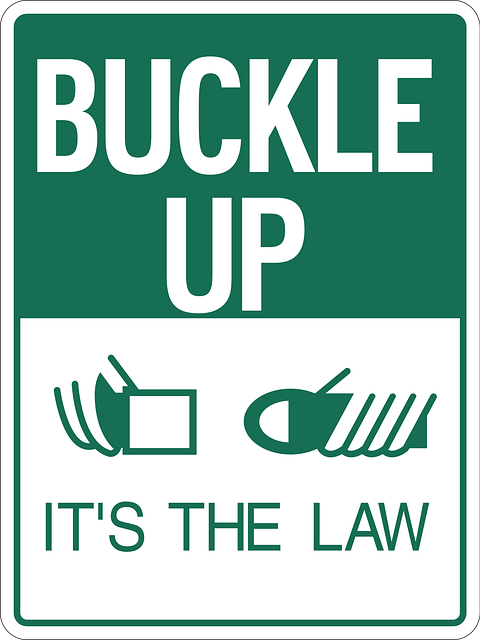Sentencing Reforms Target Mail Wire Fraudsters via Policy Changes

Mail wire fraud, a deceptive scheme impersonating trusted entities, poses significant challenges. Se…….
In the ever-evolving landscape of criminal justice, sentencing guidelines reform and policy changes stand as pivotal strategies to address systemic issues and foster more equitable and just outcomes. This comprehensive article delves into the intricacies of these reforms, exploring their global impact, economic implications, technological integrations, and the challenges they present. By examining real-world examples and analyzing current trends, we aim to provide a holistic understanding of how sentencing guidelines are reshaping justice systems worldwide.
Sentencing guidelines reform refers to the systematic review and revision of policies that dictate prison sentences for various criminal offenses. These guidelines serve as a framework for judges to impose penalties, ensuring consistency, fairness, and proportionality in sentencing. The core components include:
Historically, sentencing guidelines emerged as a response to the perceived arbitrariness of judicial decisions, aiming to reduce disparities and ensure fairness. The concept gained traction in the late 20th century, with countries like Canada, Australia, and several European nations pioneering these reforms. Today, they are widely recognized as essential tools for criminal justice systems worldwide.
The influence of sentencing guidelines reform extends across borders, reflecting a global movement towards more transparent, consistent, and human-centered approaches to punishment. Key trends shaping this landscape include:
Regional Impacts:
| Region | Notable Developments |
|---|---|
| North America | The US has seen a mix of approaches, with some states adopting mandatory minimum sentences while others focus on guideline-based systems. Canada’s Sentencing Reform Act (2012) introduced a more flexible approach, emphasizing rehabilitation and community-based sanctions. |
| Europe | The EU’s Criminal Law Package (2022) aims to standardize sentencing practices across member states, promoting fairness and transparency. Countries like Germany and France have long-established guideline systems with regular reviews. |
| Asia Pacific | Japan has a highly structured sentencing system with detailed guidelines, while Australia’s Sentencing Principles guide judges in determining sentences, focusing on proportionality and rehabilitation. |
| Middle East and Africa | Some countries in these regions are implementing reform initiatives, often influenced by international standards. The United Arab Emirates (UAE) has introduced mandatory sentencing guidelines for certain offenses. |
The economic dimensions of sentencing guideline reforms are multifaceted, impacting various sectors:
Technology plays a pivotal role in modernizing sentencing practices, offering both tools for efficiency and insights for informed decision-making:
The development and implementation of sentencing guideline reforms are guided by a web of policies and regulations that vary across jurisdictions. Key factors include:
Despite their benefits, sentencing guideline reforms face significant challenges, prompting critics to question their effectiveness and potential drawbacks:
Strategies for Improvement:
This comprehensive reform aimed to reduce prison populations by emphasizing alternative sanctions and community-based programs. Key changes included mandatory sentence reviews, increased use of restorative justice practices, and guidelines for sentencing youth offenders. The act resulted in a significant decrease in incarceration rates, particularly among young people, while maintaining public safety.
Lessons Learned:
Norway has adopted a unique approach, prioritizing restorative justice and community sanctions over incarceration. Offenders are often sent to “open prisons” or assigned community service work with close monitoring. This model has led to high rates of successful reintegration and low recidivism, challenging traditional prison-focused sentencing.
Insights:
The Sentencing Council in the UK has played a pivotal role in developing guidelines, utilizing data analytics to identify disparities and inform policy changes. For example, they introduced sentencing guidelines for fraud offenses, considering the economic impact and severity of different types of fraud. This data-driven approach ensures that sentences are proportional to the offense.
Key Takeaways:
The future of sentencing guideline reforms is poised for further evolution, driven by technological advancements and a growing emphasis on restorative justice:
Sentencing guideline reform and policy changes represent a transformative force in criminal justice systems worldwide. By addressing systemic disparities, fostering fairness, and emphasizing rehabilitation, these reforms contribute to more just and effective outcomes. The global landscape is characterized by evolving trends, driven by technological advancements, data-informed decision-making, and the adoption of restorative justice practices.
As the dialogue continues, continuous evaluation and adaptation are essential to ensure that sentencing guidelines remain responsive to societal needs. By learning from successful case studies and addressing challenges head-on, policymakers can navigate this evolution, ultimately enhancing the fairness and humanity of criminal justice systems.
Q: How do sentencing guidelines affect prison populations?
A: Sentencing guidelines influence prison populations by setting specific sentence ranges for offenses. This can lead to alternative sentences, such as community service or probation, instead of imprisonment, potentially reducing overall incarceration rates.
Q: Can technology truly assist in impartial sentencing?
A: Yes, technology offers tools to analyze vast data sets, providing insights that aid judges in making more informed decisions. However, it’s crucial to ensure that algorithms are fair, transparent, and regularly audited to prevent bias.
Q: What is the role of restorative justice in modern sentencing?
A: Restorative justice focuses on healing victims, rehabilitating offenders, and restoring communities. It offers alternatives to traditional punishment, emphasizing accountability and reintegration, which can reduce recidivism rates.
Q: How do economic considerations impact sentencing guideline reforms?
A: Economic factors influence reform by affecting funding for legal services, prison construction, and crime prevention programs. Successful reforms can lead to cost savings by reducing recidivism and the need for repeated incarceration.
Q: Are there any international standards for sentencing guidelines?
A: While there are no universal guidelines, many countries harmonize their practices to ensure fairness and transparency. International organizations like the EU promote standardized sentencing across member states through initiatives like the Common Justice Area.

Mail wire fraud, a deceptive scheme impersonating trusted entities, poses significant challenges. Se…….

Securities class actions, driven by Sentencing Guidelines Reform and Policy Changes, play a crucial…….

Whistleblower Protection Lawsuits play a vital role in uncovering unethical practices, incentivizing…….

Consumer protection laws safeguard individuals from deceptive business practices, focusing on produc…….

Public corruption undermines democracy and governance. Sentencing Guidelines Reform and Policy Chang…….

Litigation Support Services play a pivotal role in modern justice, especially with Sentencing Guidel…….

The Sentencing Guidelines Reform and policy changes are transforming financial crime investigations…….

The Sentencing Guidelines Reform and Policy Changes significantly alter accountability for C-level e…….

Healthcare compliance experts are essential in navigating complex legal landscapes shaped by Sentenc…….

Environmental crimes, causing significant harm globally, require a nuanced legal approach. Sentencin…….